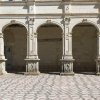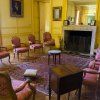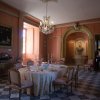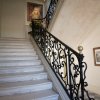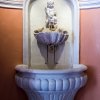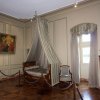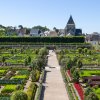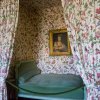We began the morning eating a leisurely and tasty breakfast at Château de Marçay, then we got our butts on the bus to see two more Loire Valley Castles. Our first excursion of the day was to the Château de Villandry. As far as buildings go, there was nothing that really differentiated it from many of the other great chateaus of the Loire Valley, however, Villandry stands out for its beautiful and expansive gardens, considered by some to be one of the best in the world.
The following synopsis comes from the Chateau de Villandry article in wikipedia. The Chateau also has it’s own website.
The lands where an ancient fortress once stood were known as Colombier until the 17th century. Acquired in the early 16th century by Jean Le Breton, France’s Controller-General for War under King Francis I, a new château was constructed around the original 14th-century keep where King Philip II of France once met Richard I of England to discuss peace. It is also known for its beautiful gardens.
The château remained in the Le Breton family for more than two centuries until it was acquired by the Marquis de Castellane. During the French Revolution the property was confiscated and in the early 19th century, Emperor Napoleon acquired it for his brother Joseph Bonaparte.
In 1906, Joachim Carvallo purchased the property and poured an enormous amount of time, money and devotion into repairing it and creating what many consider to be the most beautiful gardens anywhere. Its famous Renaissance gardens include a water garden, ornamental flower gardens, and vegetable gardens. The gardens are laid out in formal patterns created with low box hedges. In 1934, Château de Villandry was designated a Monument historique. Like all the other châteaux of the Loire Valley, it is a World Heritage Site.
Still owned by the Carvallo family, the Château de Villandry is open to the public and is one of the most visited châteaux in France; in 2007 the château received about 330,000 visitors.

The gardens are so expansive, that one would need to take a photo from the air to see it all. Even ultrawide lenses cannot convey the sheer size of landscaping. One could spend days there and still not see all it has to offer.
![120908-14-30-PENTAX K-5-smc PENTAX-DA- 16-50mm F2.8 ED AL [IF] SDM-2](http://www.robfaucher.com/wp-content/uploads/2012/10/120908-14-30-PENTAX-K-5-smc-PENTAX-DA-16-50mm-F2.8-ED-AL-IF-SDM-2-800x529.jpg)
![120908-14-33-PENTAX K-5-smc PENTAX-DA- 16-50mm F2.8 ED AL [IF] SDM](http://www.robfaucher.com/wp-content/uploads/2012/10/120908-14-33-PENTAX-K-5-smc-PENTAX-DA-16-50mm-F2.8-ED-AL-IF-SDM-397x600.jpg)
Built between 1518 and 1527, this château is considered one of the foremost examples of early French renaissance architecture. Set on an island in the middle of the Indre river, this picturesque château has become one of the most popular of the châteaux of the Loire valley. For more information on the historic Château d’Azay-le-Rideau, please refer to the wikipedia article.
I saw a group of people at the Chateau who made me very jealous, namely a group of motorcycle riders touring the area! Damn them! I wanted to be doing that instead of being crammed on a bus. Well, there’s always another year eh?


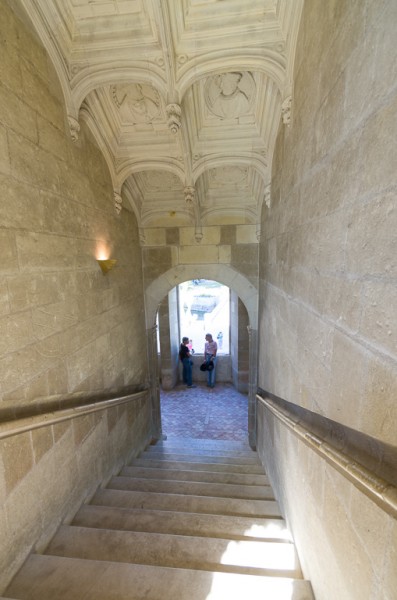
The château’s richly sculpted interior decoration once again reflects the influence of the Italian renaissance. It is made up of several drawing rooms and stately apartments, most of which are decorated in the neo-renaissance style popular during the 19th century.

There is something to be said about class inequality, it does lead to beautiful buildings and art. Egalitarianism would never produce such rare inspiration and exceptional creativity! Those of you not offended by that last statement are free to peruse the rest of the photos.










